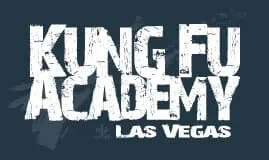When it comes to martial arts, there are a lot of different styles, and each one has its own set of techniques and philosophies. There are also variations within martial arts! "Kung Fu," for example, is a blanket term that includes a lot of different variations.
Within this broad variety, one martial art that is worth mentioning is Wing Chun. Wing Chun is known for its close-quarters combat techniques and efficient use of energy. Though it's not usually associated with takedowns, Wing Chun actually does use them! In this blog post, we'll explore what Wing Chun takedowns are, and how they're different from the ones in other martial arts styles.
Wing Chun Takedown
1. Close-Quarters Philosophy:
Wing Chun operates on the idea that combat often takes place at close range. So, unlike some other martial arts that rely on strikes and kicks from a distance, Wing Chun practitioners train mostly in close-quarters combat. This proximity influences the nature of Wing Chun takedowns, which are designed to work effectively in tight spaces.
2. Simplicity and Efficiency:
Wing Chun takedowns are simple and efficient. In arts like Judo or Brazilian Jiu-Jitsu, there are a great number of complex throws and sweeps, but Wing Chun takedowns tend to be a bit more straightforward and direct. They aim to disrupt an opponent's balance and stability quickly, facilitating follow-up strikes or escapes.
Wing Chun Takedowns
3. Balance and Sensitivity:
Another part of Wing Chun is becoming perceptive about an opponent's movements, balance, and energy. Understanding an opponent's balance is really important in any martial art, especially close-range ones, and a good martial artist can use this to their advantage. Wing Chun takedowns often involve manipulating an opponent's balance, along with strikes or trapping, which make the person vulnerable to being taken down.
4. Grappling as a Complement:
While it does incorporate elements of grappling and trapping, Wing Chun is not primarily a grappling art. These techniques can be used with takedowns when the situation calls for it. Wing Chun practitioners are trained to flow between striking, trapping, and takedowns as needed.
Wing Chun Takedowns
5. Adaptability:
Consider this…
Simplicity can be good! Wing Chun takedowns are adaptable to different scenarios. They can be used defensively to upset an opponent's attack, or offensively to initiate control over an adversary. This adaptability makes Wing Chun takedowns a great tool in self-defense situations. Because Wing Chun bridges the divide between grappling and striking, it can also be a good way to learn how to put together your techniques if you train other martial arts, like Judo or boxing.
6. Real-World Application:
One of the great things about Wing Chun is its practicality in real-world self-defense. Wing Chun takedowns are aimed at quickly disabling or controlling an opponent, not surprising given the art's self-defense philosophy.
Do you follow me so far?
Many other martial arts styles focus extensively on takedowns and ground fighting, but Wing Chun prioritizes on-your-feet simplicity, efficiency, and close-quarters combat. Because of this, it might not be the best choice if you're looking for in-depth grappling techniques or ground-based training. However, it still offers a unique perspective on takedowns that is great for self-defense training and close-range combat.
Bottom line is…
While its takedowns may not be as complex as those in some other arts, Wing Chun's techniques are valuable tools in any martial artist's toolkit, making it an effective choice for self-defense and close-range combat.
